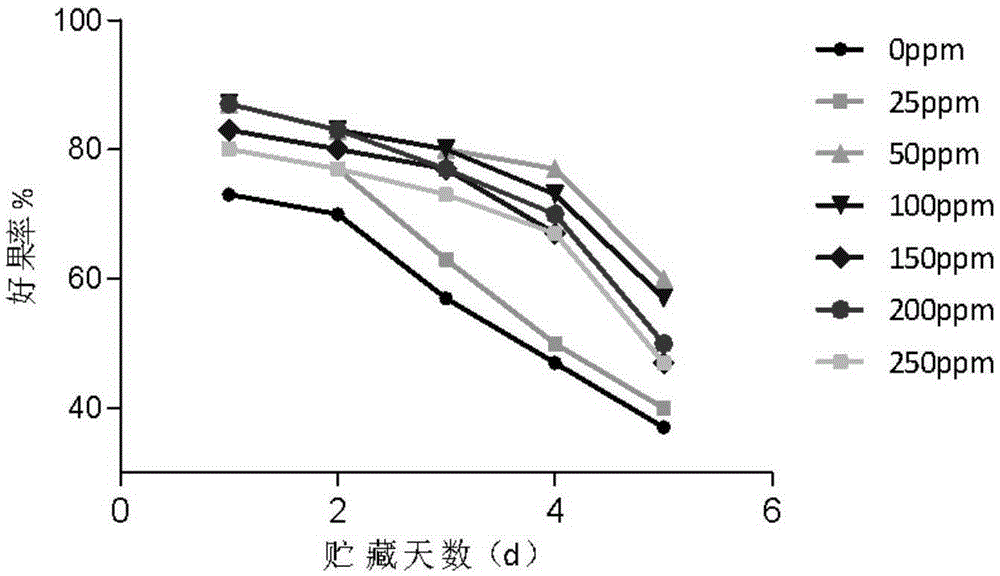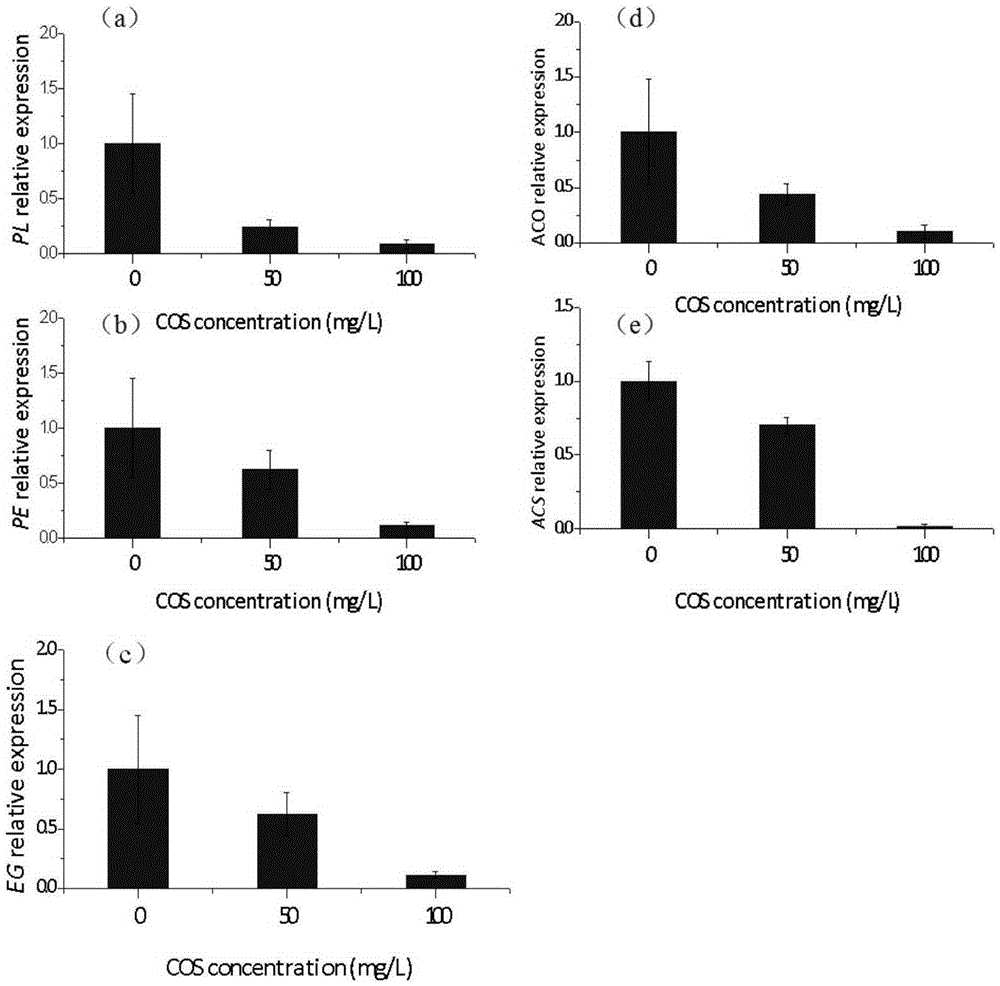Fresh keeping method for vegetables and fruits
A fresh-keeping method and technology for fruits and vegetables, applied in the fields of fruit and vegetable preservation, food preservation, food science, etc., to achieve the effect of good pulp flavor, simple application process and low cost
- Summary
- Abstract
- Description
- Claims
- Application Information
AI Technical Summary
Problems solved by technology
Method used
Image
Examples
Embodiment 1
[0025] Embodiment 1: the preservation test of oligochitosan and oligochitosan compound preparation to strawberry
[0026] Test crops: Greenhouse strawberry (variety: Qingxiang)
[0027] Pesticide treatment: 140 strawberry plants were selected for experiment. Among them, 60 plants were pre-treated with chitosan oligosaccharides, and the fruits were divided into Ⅰ. Chitosan oligosaccharides pre-harvest treatment group, Ⅱ. Chitosan oligosaccharides pre-harvest treatment + chitosan / chitosan compound preparation post-harvest treatment group, Ⅲ. Chitooligosaccharide preharvest treatment + chitooligosaccharide / sodium alginate compound preparation postharvest treatment group. The 80 fruits without chitosan pretreatment were divided into Ⅳ. control group, Ⅴ. chitosan postharvest treatment group, Ⅵ. chitosan oligosaccharide / chitosan compound preparation postharvest treatment group and Ⅶ. positive Control (thiophazine-methyl 1000ppm) postharvest treatment group. Among them, the prehar...
Embodiment 2
[0036] Embodiment 2: the preservation test of oligochitosan and oligochitosan compound preparation to cherry
[0037] Test crop: orchard cherry tree (variety: red light)
[0038] Pesticide treatment: 7 cherry trees were selected for experiment. Three of them were pre-treated with chitosan oligosaccharides, and the fruits were divided into Ⅰ. Chitosan oligosaccharides pre-harvest treatment group, Ⅱ. Chitosan oligosaccharides pre-harvest treatment + chitosan / chitosan compound preparation post-harvest treatment group Ⅲ. Chitooligosaccharide preharvest treatment + chitooligosaccharide / sodium alginate compound preparation postharvest treatment group. After harvesting, the 4 fruits without chitosan oligosaccharide were divided into IV. control group, V. chitosan postharvest treatment group, VI. chitosan oligosaccharide / chitosan compound preparation postharvest treatment group and VII. positive control group (Thiaphazine-methyl 1000ppm) postharvest treatment group. Among them, the...
Embodiment 3
[0049] Embodiment 3: the fresh-keeping test of oligochitosan and oligochitosan compound preparation to litchi
[0050] Test crop: orchard lychee tree
[0051] Pesticide treatment: Select 7 litchi trees for experiment. Three of them were pre-treated with chitosan oligosaccharides, and the fruits were divided into Ⅰ. Chitosan oligosaccharides pre-harvest treatment group, Ⅱ. Chitosan oligosaccharides pre-harvest treatment + chitosan / chitosan compound preparation post-harvest treatment group Ⅲ. Chitooligosaccharide preharvest treatment + chitooligosaccharide / sodium alginate compound preparation postharvest treatment group. The 4 fruits without chitosan pretreatment were divided into Ⅳ. control group, Ⅴ. chitosan postharvest treatment group, Ⅵ. chitosan oligosaccharide / chitosan compound preparation postharvest treatment group and Ⅶ. positive Control (thiophazine-methyl 1000ppm) postharvest treatment group. Among them, oligochitosan preharvest treatment concentration was 75 μg / mL...
PUM
 Login to View More
Login to View More Abstract
Description
Claims
Application Information
 Login to View More
Login to View More - R&D
- Intellectual Property
- Life Sciences
- Materials
- Tech Scout
- Unparalleled Data Quality
- Higher Quality Content
- 60% Fewer Hallucinations
Browse by: Latest US Patents, China's latest patents, Technical Efficacy Thesaurus, Application Domain, Technology Topic, Popular Technical Reports.
© 2025 PatSnap. All rights reserved.Legal|Privacy policy|Modern Slavery Act Transparency Statement|Sitemap|About US| Contact US: help@patsnap.com



